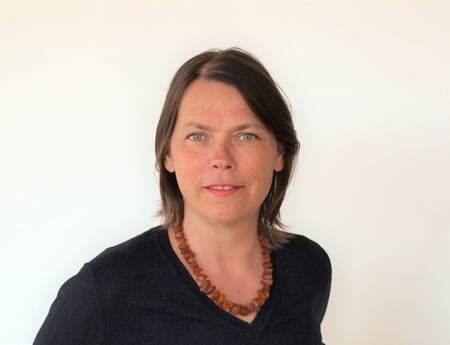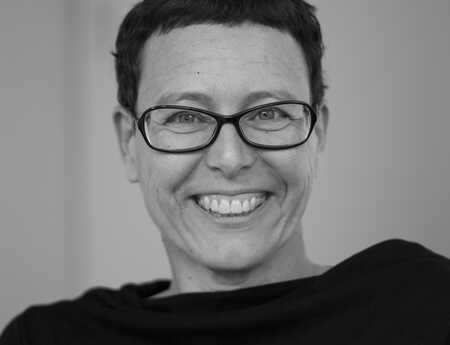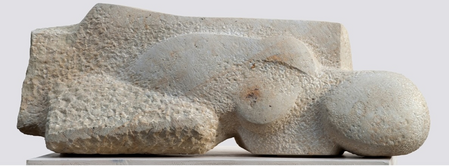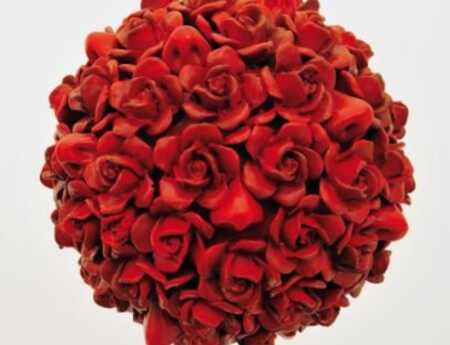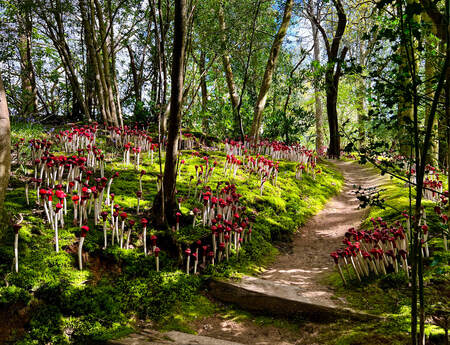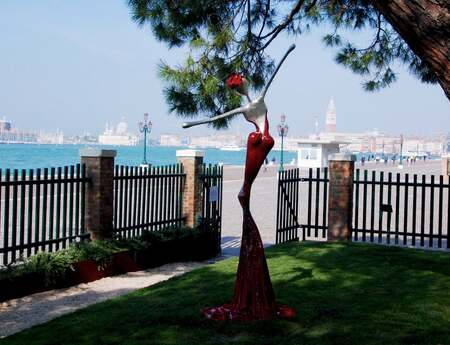Stone Quarry Time and Sculpture Summer Exhibition: A Day Trip to Pirna: Sandstone Full of Life
A Sculpture Network dialogue event, organised by cultural manager and SN coordinator Anemone Vostell, is heading to Pirna for the finissage of the anniversary exhibition of the Berlin sculpture symposium SteinBruchZeit (StoneQuarryTime) with an art talk and a visit to the annual Pirna Skulpturensommer (Sculpture Summer) exhibition to discover "sandstone full of life".

Encounters with Professor Helmut Heinze, mentor of the Pirna Summer of Sculpture, co-curator Gisela Protze, and curator Christiane Stoebe, as well as the organisers of the Berlin Sculpture Symposium, Margerite Blume-Cárdenas, Ursula Güttsches, and Robert Schmidt-Matt, both long-time participants of the symposium, show us how vivid sculpture truly is.
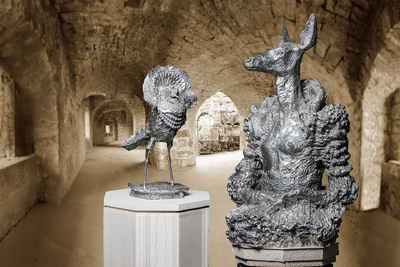
Each year, the Sculpture Summer exhibition takes place on the Sonnenstein, high above the town of Pirna. Below the castle in the bastions of the former fortifications, sculptor and art educator Christiane Stoebe curates changing themed exhibitions with statues, installations, and interventions together with co-curators Gisela Protze and Bettina Heymann.
The imposing defence architecture is contrasted with classical and contemporary sculpture, thus giving it a new sense of life. A life that confronts Haltung. Haltungen (Posture. Positions) with the past, but also with the present.
This is the title of the Pirna Summer of Sculpture 2024, which brings together figurative works by Christa Biederbick (DE), Laura Eckert (DE), Jakub Goll (CZ), Hermann Grüneberg (DE), Elisabeth Howey (DE), Michal Hradil (CZ), Aleš Hvízdal (CZ), Käthe Kollwitz (DE), Agnes Lammert (DE), Martin Malý (CZ), Dana Meyer (DE), Katja Neubert (DE), Sebastian Paul (DE), Tillmann Riemenschneider (DE), Julia Schleicher (DE), Siegfried Schreiber (DE) and Petr Šťastný (CZ) as well as installations and interventions by Valentin Hertweck (DE), Michal Hradil (CZ), Juliane Jaschnow (DE), Julio Meiron (BR/DE), Irene Pätzug (DE) and Adam Velíšek (CZ).
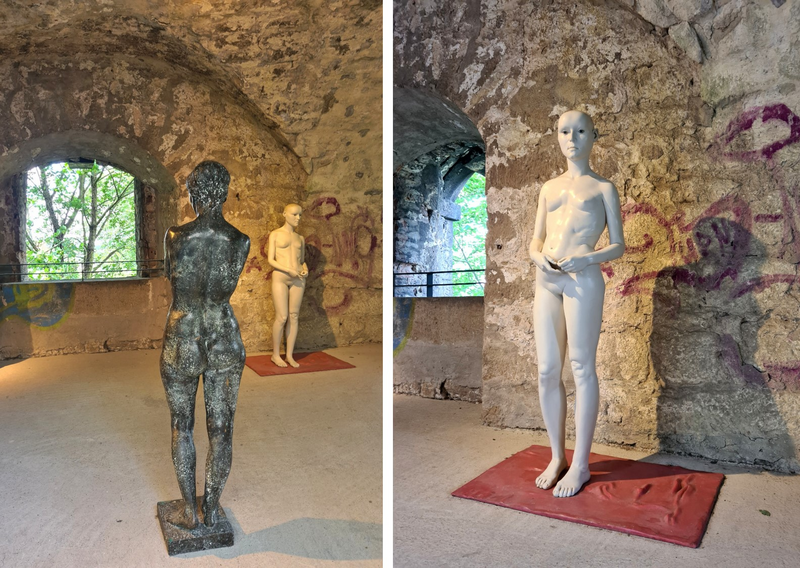
The interplay of historical and classical sculptures by Käthe Kollwitz (Pieta, 1937-1938), Siegfried Schreiber (e.g., Mädchentorso mit gesenktem Kopf (Girl Torso with Lowered Head), 1980), and a replica of Tilman Riemenschneider's Maria (original dating from the Renaissance) with contemporary sculpture by Christa Biederblick (Mädchen auf rotem Tuch (Girl on Red Cloth), 1971-1972), Agnes Lammert (Mud, 2016), or Adam Velišek (Kinetic Sculpture Alley, 2019) is surprising and breaks through both the rigid surroundings and conventional viewing patterns.
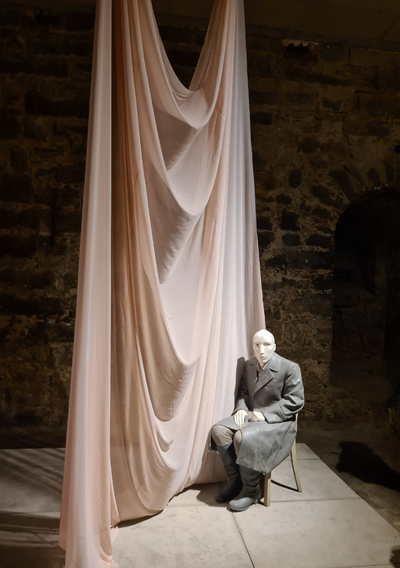
The opening and closing spaces allow visitors to enter deep into the vault. The viewer's gaze falls down onto the intervention by Irene Pätzug and Valentin Hertweck (Der Schleier allein macht die Nonne nicht (The Veil Alone Will Not Make The Nun), 2024), which envelops Christa Biederbick's figure Soldat (Soldier), 1994-1997): A translucent pink gauze curtain gently sweeps over the frozen figure of a man in a military coat and military boots sitting on a chair, his hands tightly clenched but powerlessly resting on his lap.
Professor Helmut Heinze (*1932), a sculptor himself and former professor of sculpture at the Dresden Academy of Fine Arts, reminds us beforehand of the atrocious history of the nearby Pirna-Sonnenstein sanatorium and nursing home, where no fewer than 13,720 mainly mentally ill and mentally handicapped people and more than a thousand prisoners from Nazi concentration camps were murdered between 1940 and 1941.
In the run-up to the dialogue event at the time of the EU election campaign, I received questions ranging from concern to fierce criticism as to why I was offering this day trip at all in the wake of the general shift to the right, particularly in Saxony. My position that dialogue is of great importance precisely because of this development has been confirmed in many ways. Committed individuals, artists, academics, and art lovers are organising such projects locally and opening up a narrative of posture and positions. Initiate dialogue, create opportunities for the story to be told, and build common ground with the result of understanding.
For more than a decade, curator Christiane Stoebe has been travelling the country in her car, visiting studios, museums, and collections with the aim of bringing together the exhibits. This year, she is reviving cultural relations with the neighbouring country by showing the works of Czech artists. Here, the works of Petr Štastny (Weight, 2019) and Michal Hradil (Construction, 2016) are particularly striking.

Art critic Marcel Fišer states in the catalogue accompanying the exhibition: "After the Second World War, the political situation had changed completely following the expulsion of the Germans from Czechoslovakia and the creation of no less than three states on the ruins of Hitler's Germany. One is tempted to think that cultural exchange should have been strongest with the state that belonged to the socialist camp rather than with the German Democratic Republic (GDR). But the opposite is true: although there were various "friendship exhibitions" at regional level, there was never any representative show of contemporary East German art in Czechoslovakia that would have corresponded to the Art of the Federal Republic of Germany exhibition in Prague's Mánes in 1967. In 1988, we were also able to see a major exhibition in the National Gallery in Prague of works by Otto Herbert Hajek, who was born in Bohemia and was the first chairman of the German Artists' Association (Deutscher Künstlerbund), the official organisation of West German visual artists, from 1972 to 1979, while his countryman from Chrastava (Kratzau) in northern Bohemia, Willi Sitte, who was president of the Association of Visual Artists (VBK, Verband Bildender Künstler) in the GDR from 1974 to 1988, never experienced such an exhibition. […] The nature of today's situation, however, where distinct hierarchies and predominant centres have disappeared, is better reflected by the metaphor of a dense network of relationships between the individual players in the art world across the most disparate levels, of which the current exhibition is also an integral part of.“[1]
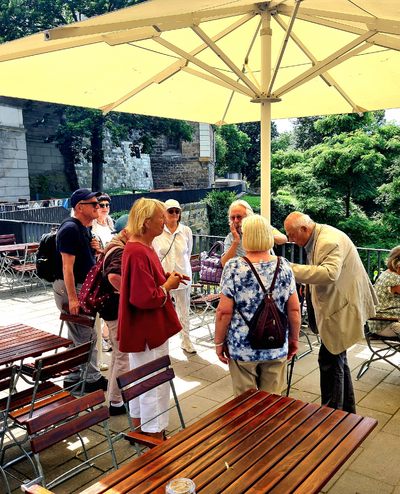
Cut: Sitting under parasols on the terrace of the tavern, we listen to what the 92-year-old contemporary witness Heinze has to say and explore references to socio-critical movements in art history, such as the Fluxus and Happening movements, before we walk through the alleyways of this beautiful Renaissance town on our way to the StadtMuseum Pirna.
To mark the 50th anniversary of the "Berlin Sculpture Symposium", the exhibition "SteinBruchZeit" (StoneQuarryTime) at the StadtMuseum Pirna is showing works by Eva Backofen, Günter Blendinger, Marguerite Blume-Cárdenas, Inka Gierden, Karin Gralki, Ursula Güttsches, Sigrid Herdam, Ulrich Jörke, Liz Kratochwil, Karl Möpert, Emerita Pansowová, Robert Schmidt-Matt, Karin Tiefensee, Annette Tucholke-Bonne, and Berndt Wilde, which were created in the "Rheinhardtsdorf I" quarry over the years. At the beginning of the 1970s, its fine and, at the same time, solid Elbe sandstone attracted the Berlin sculptor Karl Möpert, who initiated the first Berlin sculptors' symposium at the Reinhardtsdorf quarry in 1974.
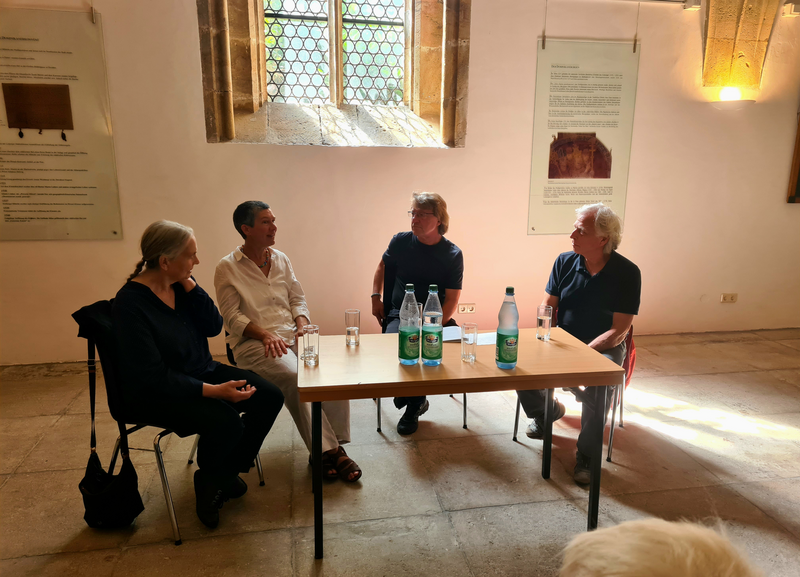
During the art talk moderated by Detlef Schweiger, sculptor and organiser Marguerite Blume-Cárdenas (Berlin), sculptor Ursula Güttsches (Dresden), and Robert Schmidt-Matt (Berlin), they will reflect on the development and prospects of the now privately run symposium.
The initial patron of the "Berlin Sculpture Symposium" was the Association of Visual Artists of the GDR, based in Berlin. Seven to ten sculptors from Berlin and the districts of the GDR took part in each symposium. Guests were also invited from Poland, the Czech Republic, Slovakia, Hungary, Romania, Bulgaria, Ukraine, Finland, and Austria. The Cultural Fund of the GDR supported the symposium with scholarships, housing costs, stone materials, tools, and transportation. VEB Elbenaturstein Dresden became a partner. Each of the participants had 1/3 square metre of stone at their disposal. Everyone was completely free to work without a given theme. The finished sculptures remained in the possession of the artists. Some of these sculptures are now to be found in museums.

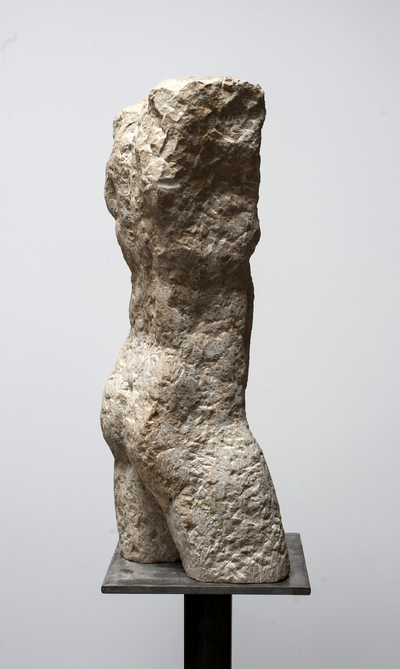
Starting in 1991, the symposium continued for four weeks in June under its own funding with the support of Sächsische Sandsteinwerke GmbH. When the sculptor Karl Möpert retired in 2010 due to health reasons, the sculptor Marguerite Blume-Cárdenas, who has been actively involved in the symposium since its early days, took over the organisation up until today. During the remainder of the summer months, the Neue Sächsische Kunstverein and students from the Dresden University of Fine Arts, the Berlin-Weißensee School of Art, and the Burg Giebichenstein Halle were also able to use the work environment established in the quarry for their symposia and study residencies.
This is how the Bonn-born sculptor Ursula Güttsches came to the quarry as a student in Heinze's class, tried her hand at the Elbe sandstone, and stuck with it. The stone demands a joint approach, especially now that industrial crushing tools are no longer available. Engineering know-how, such as that of Robert Schmidt-Matt, on where the individual wedges are to be placed and then hammered in one after the other to break the block, is shared.
Later on, sculptors from Berlin and Dresden organised international youth and inter-generational community projects together with the Caritasverband für Dresden e.V. and the municipality of Reinhardtsdorf. Today, a sculpture walking trail links the stone sculptures in the landscape in and around Reinhardtsdorf that were created during the international sculpture symposia and during other projects realised in the quarry.
To this day, the venue of the symposium has not changed. Work continues in the quarry, although "Reinhardtsdorf I" was only in operation until the end of the 1990s, slowly being replaced by the adjacent sandstone quarry "Reinhardtsdorf II", located between Krippen and Reinhardtsdorf. The symposium still takes place on the site of the now partially refilled "Reinhardtsdorf I" quarry, albeit without electricity and water. With the opening of "Reinhardtsdorf II", the direct, continuous contact between quarrymen and artists, between stone quarrying and art making, which was valued by both sides, was also cut off.[2]
A public call for entries for the symposium is not intended, as it would detract too much from the artistic work. There is no website, no social media, and no archive. But there is a highly informative publication accompanying the exhibition available.[3] If you are interested, please contact Marguerite Blume-Cárdenas or any of the other participants!
[1] Marcel Fišer: Zur Einführung in die Ausstellung, in: Pirnaer Skulpturensommer, KTP Pirna 2024
[2] Source: Dr. Teresa Ende, opening speech„SteinBruchZeit“, Pirna 2024.
[3] SteinBruchZeit – 50 Jahre Berliner Bildhauersymposium im Steinbruch Reinhardtsdorf, published by Marguerite Blume-Cárdenas in collaboration with StadtMuseum Pirna, 2024. To be ordered by e-mail to ursula@guettsches.de for 8.00 € including postage or to be purchased at the StadtMuseum Pirna for 6.00 € until the end of 2024.

